Crucial T710 2TB Gen5 PCIe M.2 SSD Review
Every generation of new hardware brings exclamations of monumental improvement, yet a seasoned buyers will quickly notice that the scale of these improvements typically fails to live up to the promised grandeur. Conversely, seasoned reviewers have already noted that Crucial’s previous T705 series was pushing the limits of its PCIe 5.0 x4 (NVMe) interface at launch: There simply isn’t any room for big bandwidth improvements, regardless of controller advancements.
| Crucial T710 2TB (CT2000T710SSD8) | |
| Form Factor | M.2 2280 |
| Capacity | 2.0TB |
| Interface | PCIe 5.0 x4 (NVMe 2.0) |
| Controller | Silicon Motion SM2508G |
| Flash | Micron 276L TLC |
| Cache | DRAM |
| Endurance | 1,200 TBW |
| Warranty | 5-years |
| Price | $280 |
Knowing that we’d call out such things, Crucial’s marketing decided to put much of its focus on power and latency (I/O per second). Is the T710 supremely cool and…quick?

There doesn’t appear to be anything weird going on with the T710’s package contents, except that Crucial sent us the non-heatsink version of the drive without the heatsinked version. We wanted to show a side-by-side comparing the new heatsink with the previous generation’s taller part, but Crucial was apparently confident that we wouldn’t need it.

You might also notice that the sticker on the back of the drive is completely flat, as its new ninth-generation NAND seems to fit twice as many bits per chip: Though is has only 19% greater layer count, Micron claims a 73% increased density that could only be achieved with a shrink in die process (ie, circuit size).

Silicon Motion’s SM2508G marks the T710’s biggest change, as both the T705 and T700 used Phison’s venerable E26: The new controller is supposed to run cooler by using less power, which in turn will allow it to throttle less when given less cooling. As for the other chips, the 5EE2D NY307 screen printing on its NAND will probably get notoriety immediately after our review is published. The 4JB77 D8CSC markings of its DRAM Cache are nearly as opaque, though using just the last half of that product code prompted Google to lead us to Micron’s 16Gbit LPDDR4 info page.
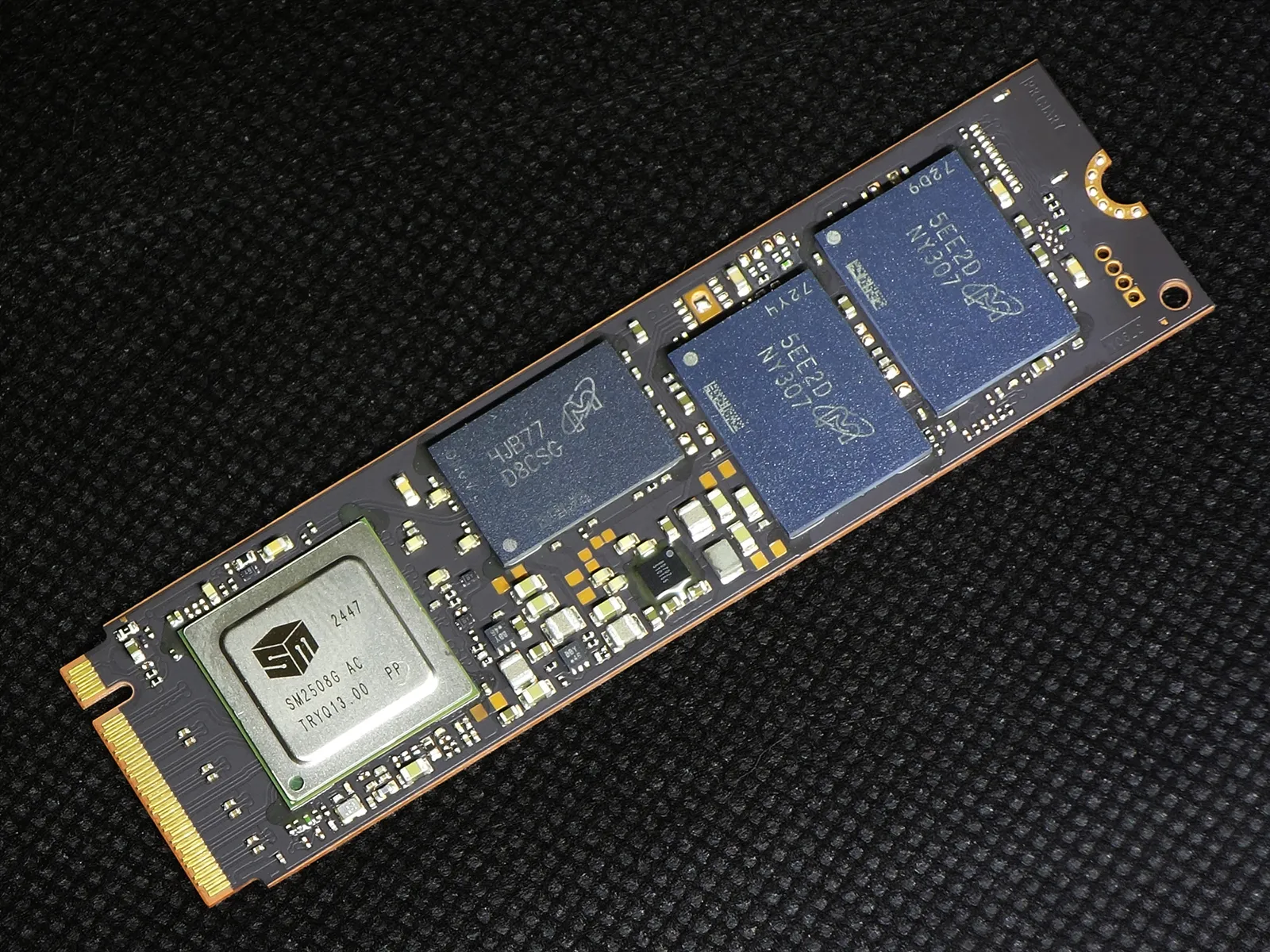
CrystalDiskInfo gives us a firmware number but doesn’t describe anything else about our drive. It does verify that we’ve selected our motherboard’s correct M.2 slot, to run NVMe mode at PCIe 5.0, and its temperature report is also handy.

AMD’S Zen 4 platform provides the CPU-based PCIe 5.0 NVMe interface to compare Crucial’s T710 to its earlier T705 and T700 models at the same 2TB capacity, but we’ll also include Adata’s early Gen5 and Crucial’s fastest Gen4 samples to round out our tests.
| CPU | AMD Ryzen 9 7950X: 16C/32T 4.5-5.7 GHz, 64MB L3 Cache, Socket AM5 |
| CPU Cooler | Alphacool Core 1 Aurora, VPP655 with Eisbecher D5 150mm, NexXxoS UT60 X-Flow |
| Motherboard | ASRock X870E Taichi, Socket AM5, BIOS 3.16 (12-20-2024) |
| Graphics | Powercolor Red Devil Radeon 6750 XT: 2324-2623MHz GPU, 12GB GDDR6 |
| Memory | Crucial Pro OC Gaming Edition DDR5-6400 2x16GB (32GB) CL32-38-38-96 1.30V |
T710 2TB Benchmark Results
All of our Gen5 samples required a heatsink to stay under their throttle points, so that even the T710’s supposed cooler tech couldn’t keep it from falling victim to our thermal test. Micron quotes only a 3W difference between the T710 (8.25W max) and T705 (12.3W max), though we saw differences as great as 8W in our tests.
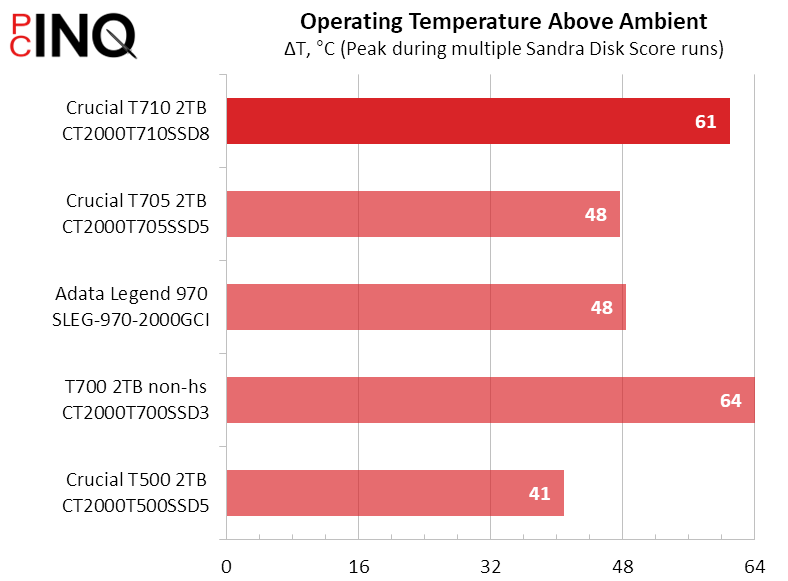
Sandra’s results are far from typical for the rest of today’s benchmarks, though they do warm us up for the T710 leadership trend.
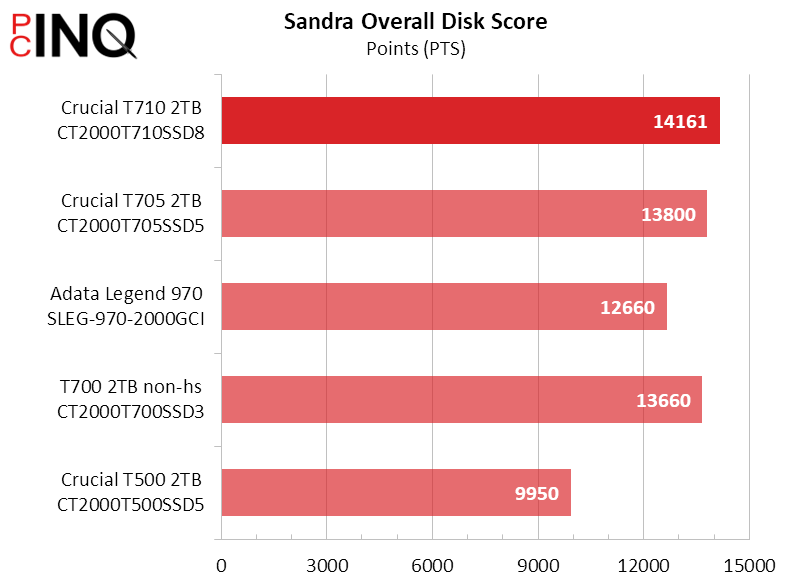
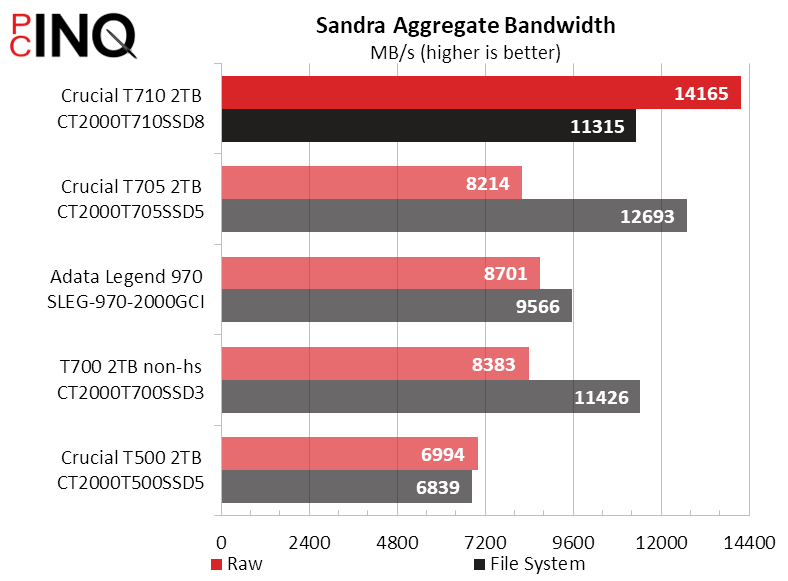

We held onto legacy AIDA64 6.75.61 specifically for its drive read test, which shows a performance leadership trend similar to Sandra’s…but with slightly less, er, enthusiasm.


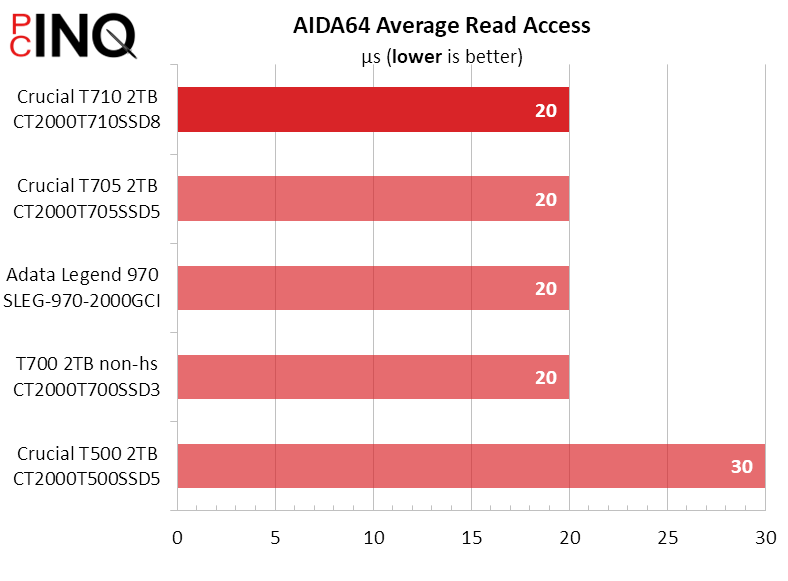
3DMark Storage presents realistic transfer patterns for loading, saving and moving games, so it’s a fine test to show the T710’s win even if it only did so by a single mark (point). If nothing else, it shows how greatly polished the T705 was when compared to earlier E26 drives.



We’re not sure why the T705 led the T710 in the overall score of PCMark’s “Quick” test, but the T710 leads in the longer “full” test

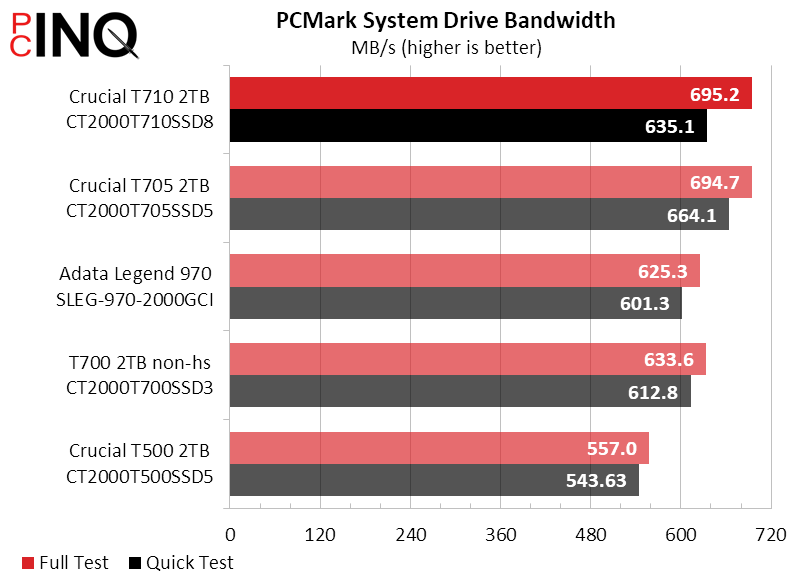
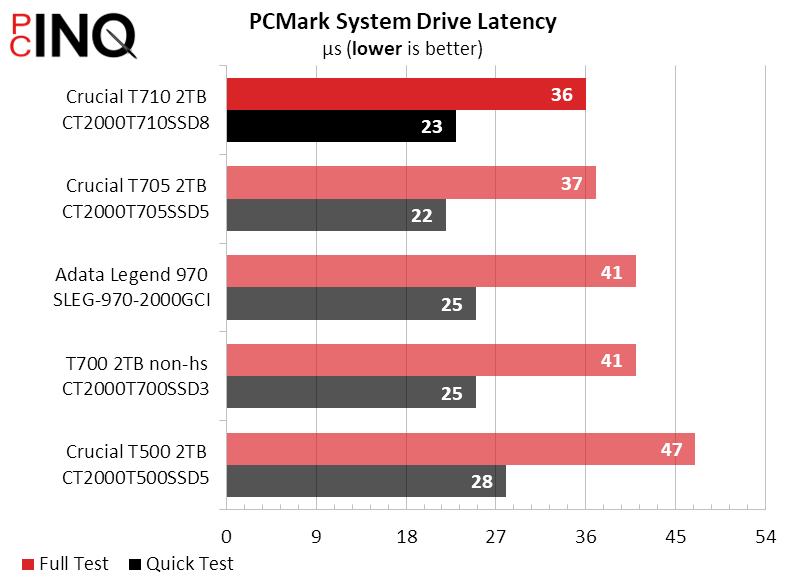
The T710’s leadership in ATTO is significant enough that we can’t even put the T705 in the same league. Is this a fluke?

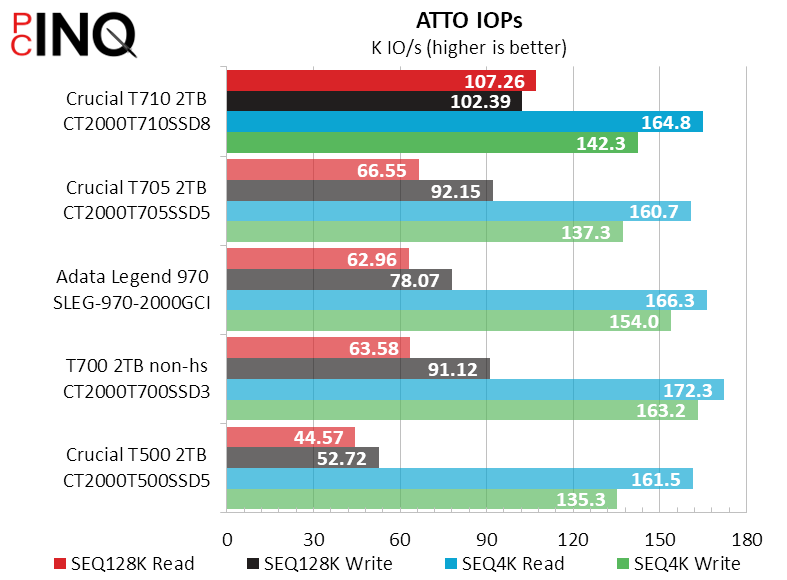
Leaning on 1M and 16k packets rather than ATTO’s 128k and 4k, CrystalDiskMark attributes most of the T710’s superiority to IOPs and adds a latency metric to show why.

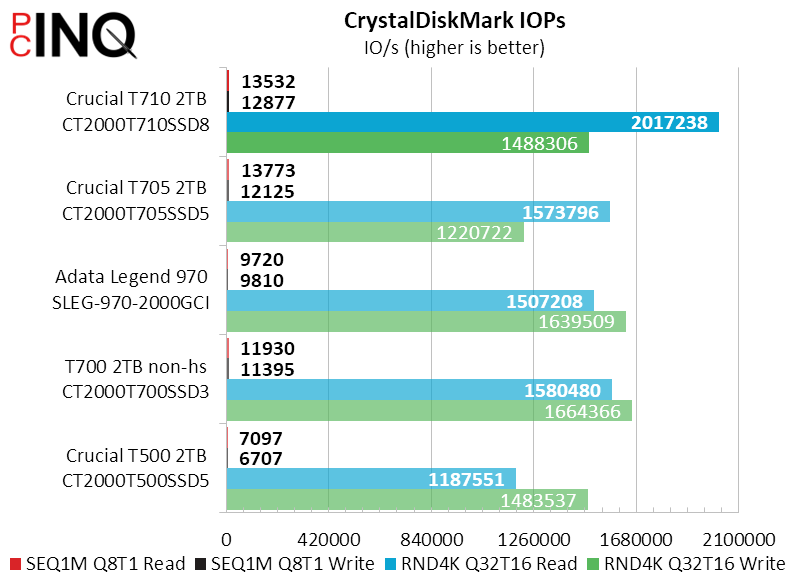
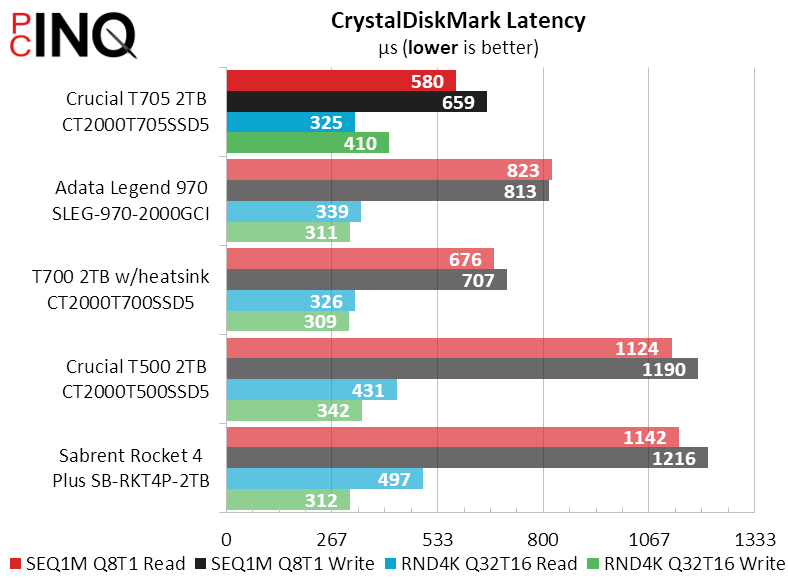
Measuring a single long file transfer, DiskBench actually ran a little faster with the T705.
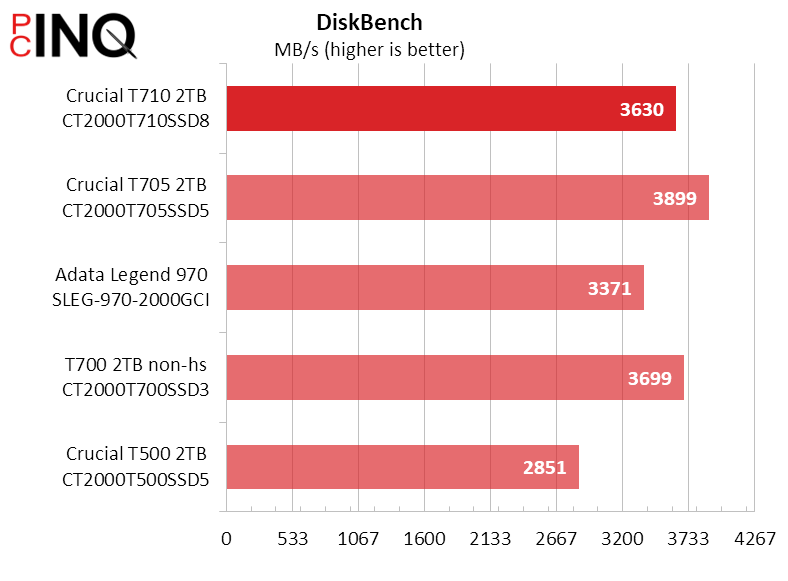
Unfortunately, DiskBench kills the T710’s chance of an overall win, and we’re not tossing that bench simply because it skews the average: It is, after all, a true benchmark.
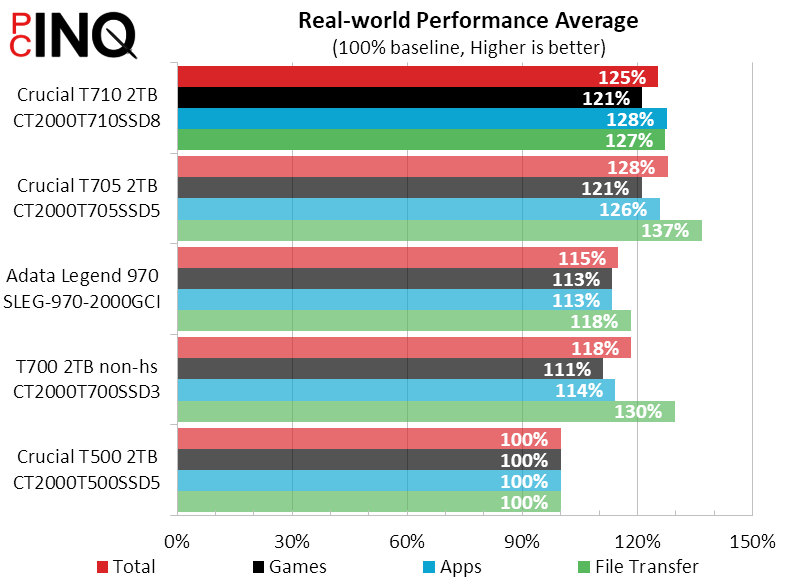
Our view of raw performance metrics had us a little excited for today’s T710 victory, but real-world applications aren’t as appreciative of its theoretical performance gain. It’s about where the T705 has been all along, with its largest real-world benefit being a lower energy consumption profile that’s more likely to be noticed in notebooks and game consoles than in desktops. The most likely reason we’d choose the T710 over the T705 on our desktop would be fickle: It’s newer.
| Crucial T710 2TB CT2000T710SSD8 | |
| Pros | Cons |
| Quicker than the T705Less energy than the T705Same great warranty as T705 | Priced slightly higher than T705Inconsistent performance gains over T705 |
| The Verdict | |
| With reduced energy and heat making it the perfect choice for notebooks, the T710’s real-world performance makes it a suitable heir to the T705’s desktop supremacy. | |
Find it at Amazon

(click for availability)
